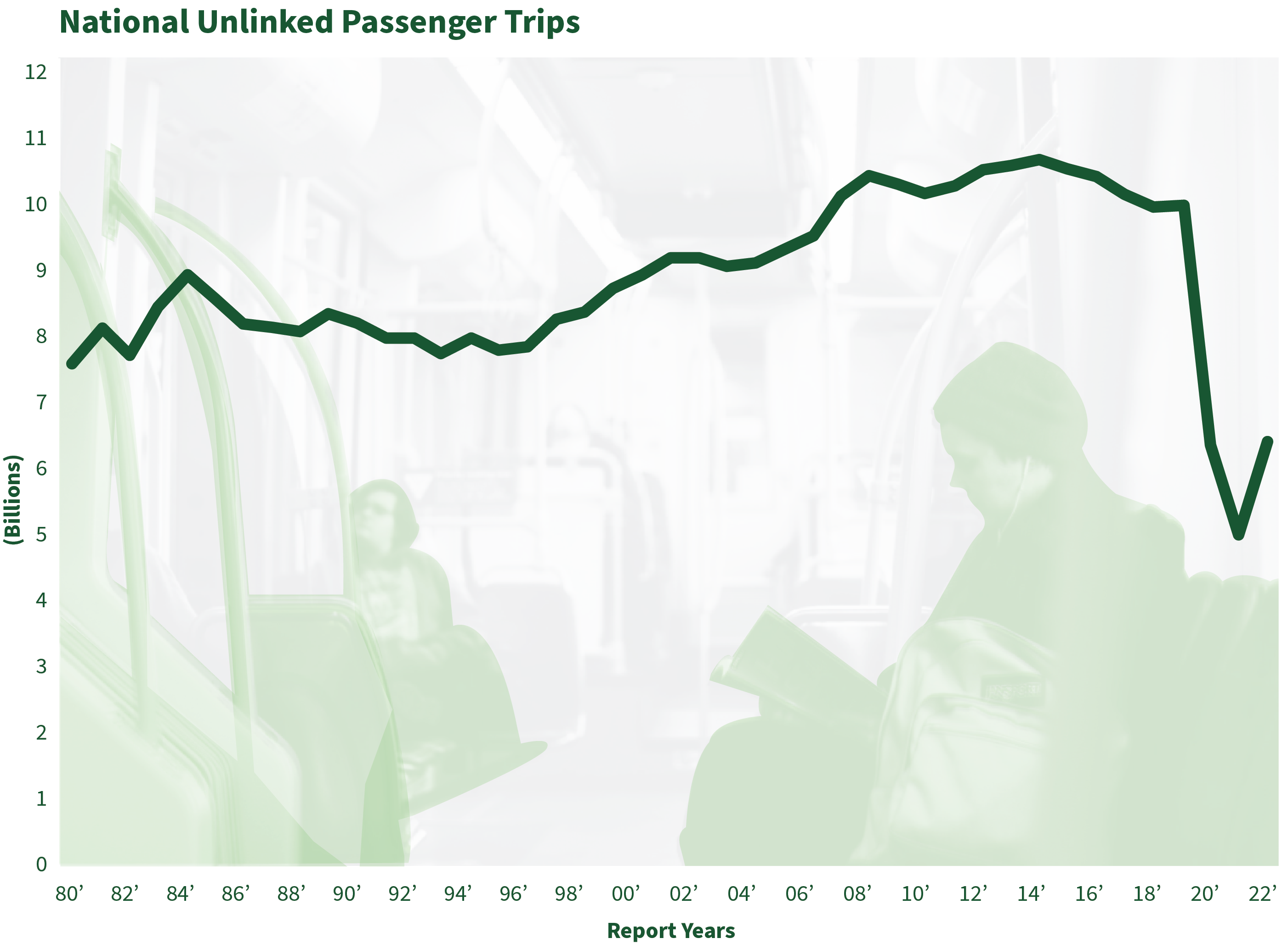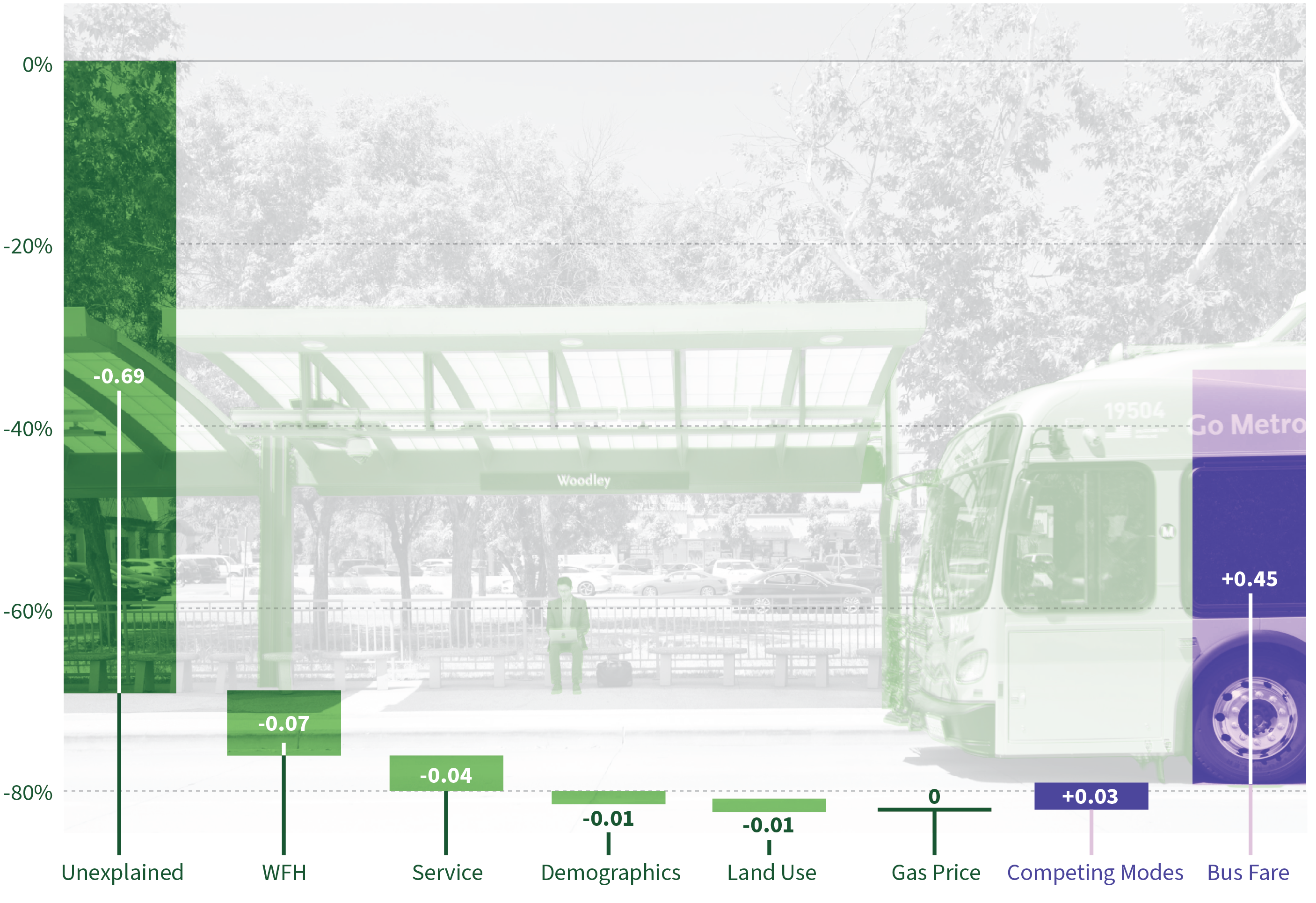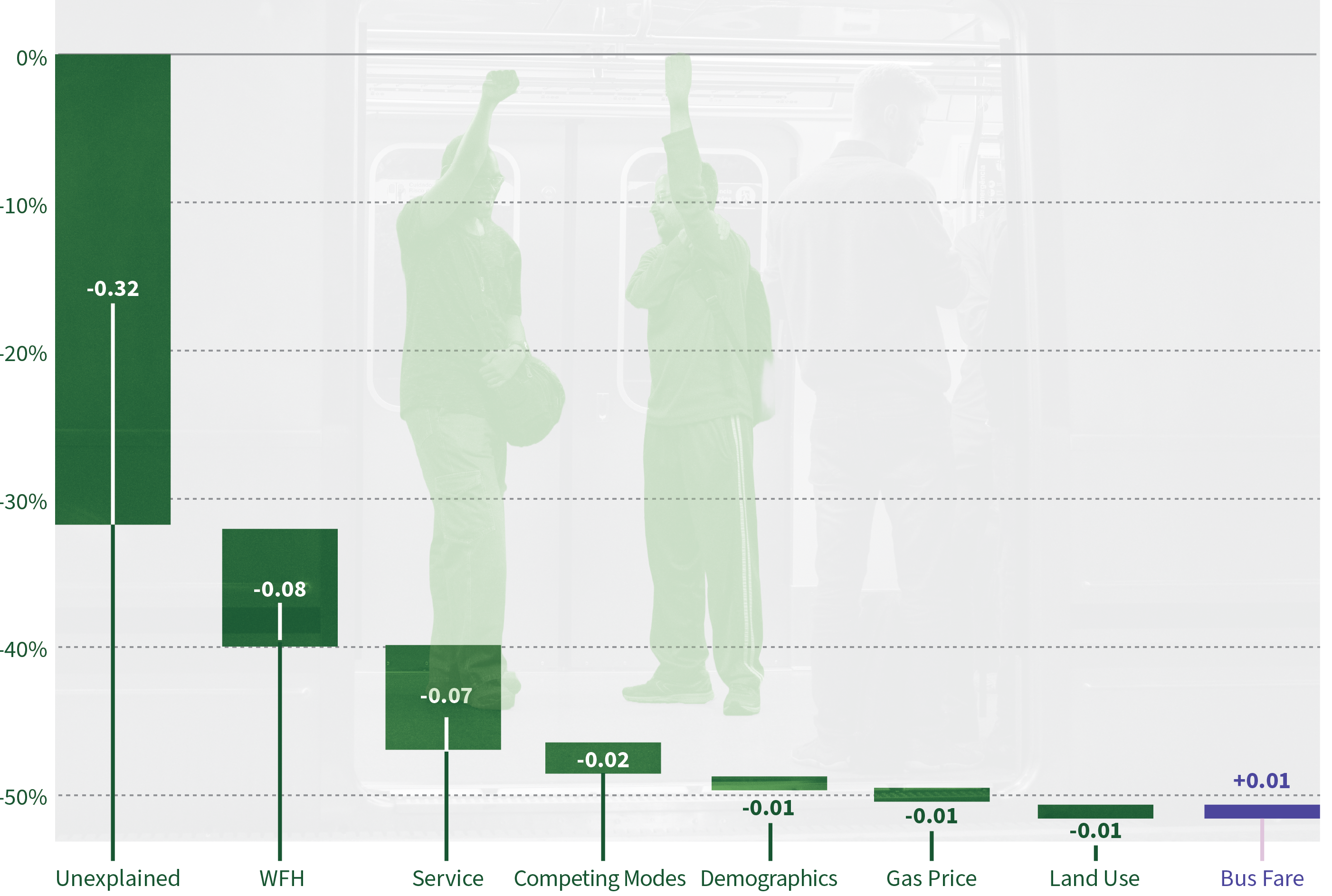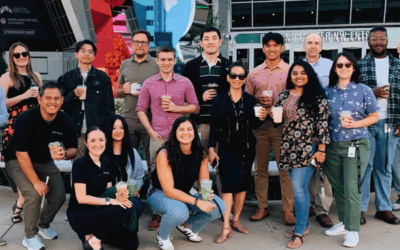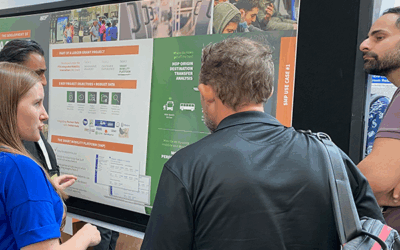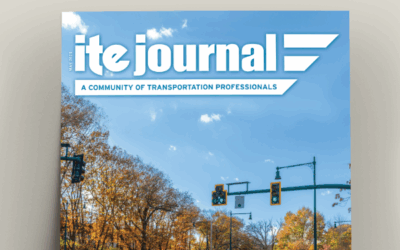Transit’s New Normal Needs New Tools

Transit’s New Normal Needs New Tools
Overview
- Ridership was falling in many agencies pre-pandemic and few systems have recovered fully.
- Factors previously associated with ridership growth like work and telework have shifted markedly.
- Our research identifies crucial variables like hybrid schedules and factors related to transit hesitancy, necessitating adjustments for enhanced accuracy in ridership models.
Across 2021 and 2022, there was far too much volatility related to how people made travel decisions to even begin to narrow in on what factors might persist into the future. In November 2023, APTA reports that ridership has recovered to above 77% of pre-pandemic levels, and trends are pointing upwards. As we begin 2024, there are new travel surveys, improved travel pattern information from big data sources, and more stable transit ridership data that can provide better insight about the probable factors that will drive transit ridership trends in the near to mid-term. (The future will always have considerable uncertainty – see our TrendLab+ tool for more information about how uncertainty affects travel).
With this backdrop in mind, our Transit Discipline Group undertook a deep dive into the variables that are included in traditional, pre-pandemic transit ridership tools. Our work included applying a 2022 model by Erhardt et. al., that was designed to evaluate changes in ridership across the country between 2012-2018. This model was selected because it performed well under pre-pandemic conditions and included many variables typical of transit ridership models. However, to understand how things have changed post-pandemic, we also applied the Erhardt model to 2022 conditions (the most recent full year of ridership data from the USDOT). In the 2022 analysis, we looked particularly for the variables and relationships in those models that may no longer be meaningful today. Below are some key takeaways from our research:
- When we apply the legacy transit ridership models with today’s data, they do not estimate current transit ridership levels well.
- Historically, employment was one of the most highly correlated variables with transit ridership, but this correlation is now insignificant.
- Changes in work from home patters in 2022-2023 only explain about one-fifth to one-third of the decrease in transit ridership, leaving much of the drop in transit ridership unexplained with traditional transit ridership model input data.
Nearly 70% of the 2018 to 2022 ridership decline on the nation’s bus systems are unexplained by traditional modeling factors:
Digging a bit deeper, our experts have identified key data and variables that are likely to improve pre-pandemic transit ridership models. In partnership with clients like BART and King County Metro we are testing and applying new variables. The two most promising data enhancements include:
Localized Remote Access Data
Current travel survey data about working from home or telecommuting often lacks the granularity that is necessary to greatly improve ridership models. Similar shifts in e-commerce and travel for retail goods and services are also too complex and nuanced for legacy travel surveys. More detail about the number of days or hours people work from home in a given week or month would strengthen the next generation transit ridership models. Fortunately, new data sources and improved travel survey data collection techniques are emerging in this space along with more data about people obtain retail and service goods (traveling themselves, on-demand delivery, and traditional parcel delivery for example). Specific to King County Metro, we worked to refine peak-period transit ridership and park-and-ride forecasts by using regional big data sources to identify the number of downtown commuters are on-site on a typical mid-week day. This reduced the model error by more than 50 percent.
Transit Hesitancy
A term we have identified as “transit hesitancy” is related to a shift in customer preferences for transit that appears to be persistent. In both qualitative and quantitative efforts, we have identified factors such as perceived asocial behavior on transit, safety or security concerns at transit stops (with important gender differences), and increased unpredictability of service caused by labor shortages and budget shortfalls as potential factors contributing to transit hesitancy. We applied a transit hesitancy factor to improve BART ridership forecasts at urban locations to account for a 12 percent drop in ridership that could not be accounted for with more traditional forecasting variables.
What’s Next?
Knowing that current ridership tools cannot reliably forecast future conditions, we have recalibrated our ridership variables to deemphasize the importance of employment and developed new model inputs that can better account for hybrid work patterns and transit hesitancy.
As more data emerges on the specific factors that are behind transit hesitancy, we will continue to refine our variables to adapt to a highly fluid market for transit ridership. With more accurate transit forecasts in place, communities can better plan for future transit services, ensure transit is provided to those who rely on it most, and identify strategies to fund this critical service.
share this article
Contributors
Jennifer Ziebarth
Statistical Expert
PhD
Email Me
Jeremiah LaRose
Transit Discipline Leader
Email Me
Explore More
2025 Staff Promotions
We’re excited to recognize our team members who were promoted in 2025. Thank you for all you do!
Join Us at ITE Western 2025 | June 29-July 2
We are looking forward to joining peers across the region at the 2025 ITE Western District Annual Meeting to share ideas, practical tools, and approaches that support safer, more inclusive transportation systems.
Post-COVID Pandemic National Travel Changes
America’s travel habits changed during COVID, and some of those changes have become permanent. The ITE Journal offers an updated look at these ongoing trends.

